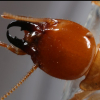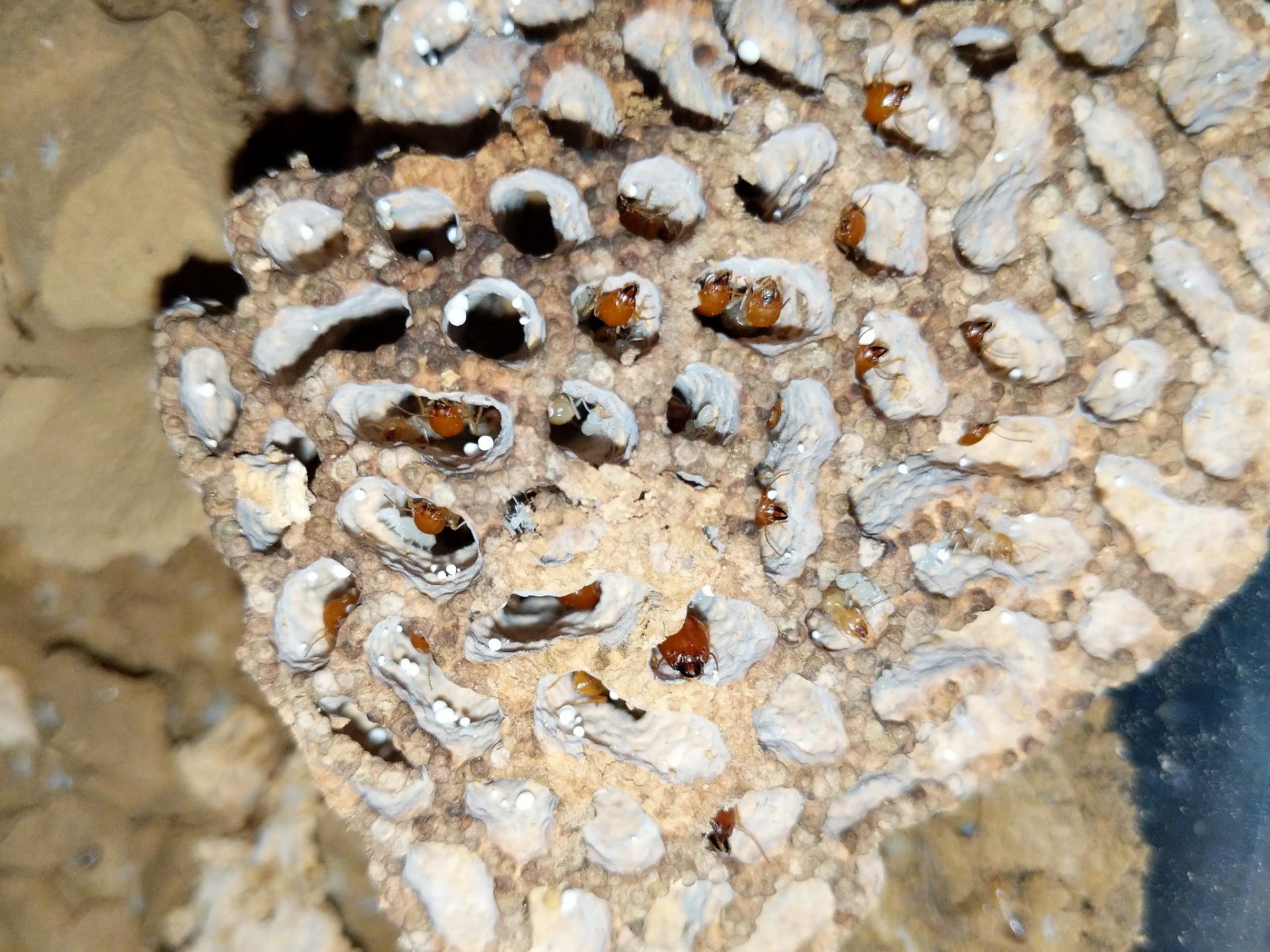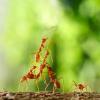Here's another nice subject from my trip to Thailand: a Macrotermes gilvus fungus comb.
These finely crafted alveolar combs, housed in dedicated chambers at the hearth of the mound, are used by all termites of the Macrotermitinae subfamily to cultivate symbiotic fungi from the genus Termitomyces and also act as the primary nursery areas for young larvae (yes, dependent non-presoldier immature termites without wing buds are to be called that). Interestingly (and unlike fungus-growing ants) the termites don't feed only on the fungus itself but also on the older combs it has fully digested; this makes the Termitomyces both a direct food source and what we could call an "external digestive system" to them. When in season these combs also produce fruiting bodies that sprout from the mounds and release spores for the workers of other incipient colonies to pick up; these fruiting bodies are edible for humans and often considered a delicacy, and in some species (chiefly Termitomyces titanicus) can reach truly impressive sizes.
Excavated fungus comb of M. gilvus, a single mound sports a lot of these and they can get much bigger. Note the white nutrient-rich fungus nodules, the termites' source of food along with old well-digested combs, and the many minor and major soldiers guarding it.

















